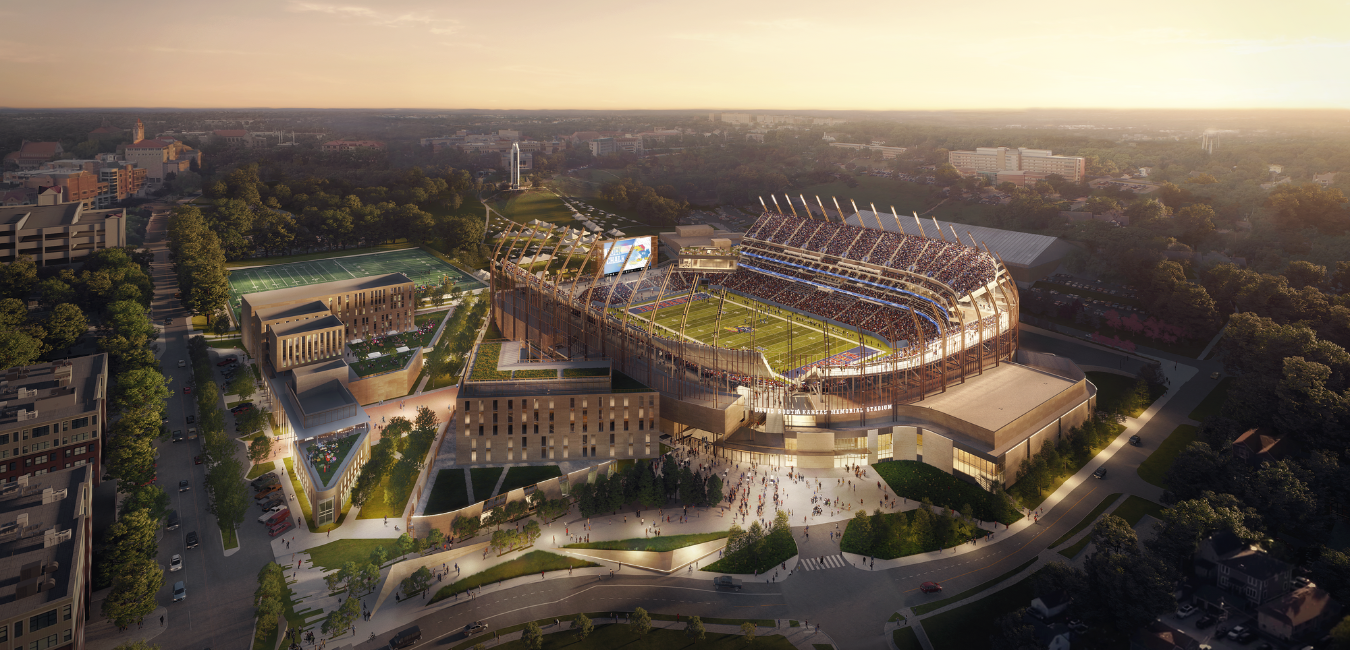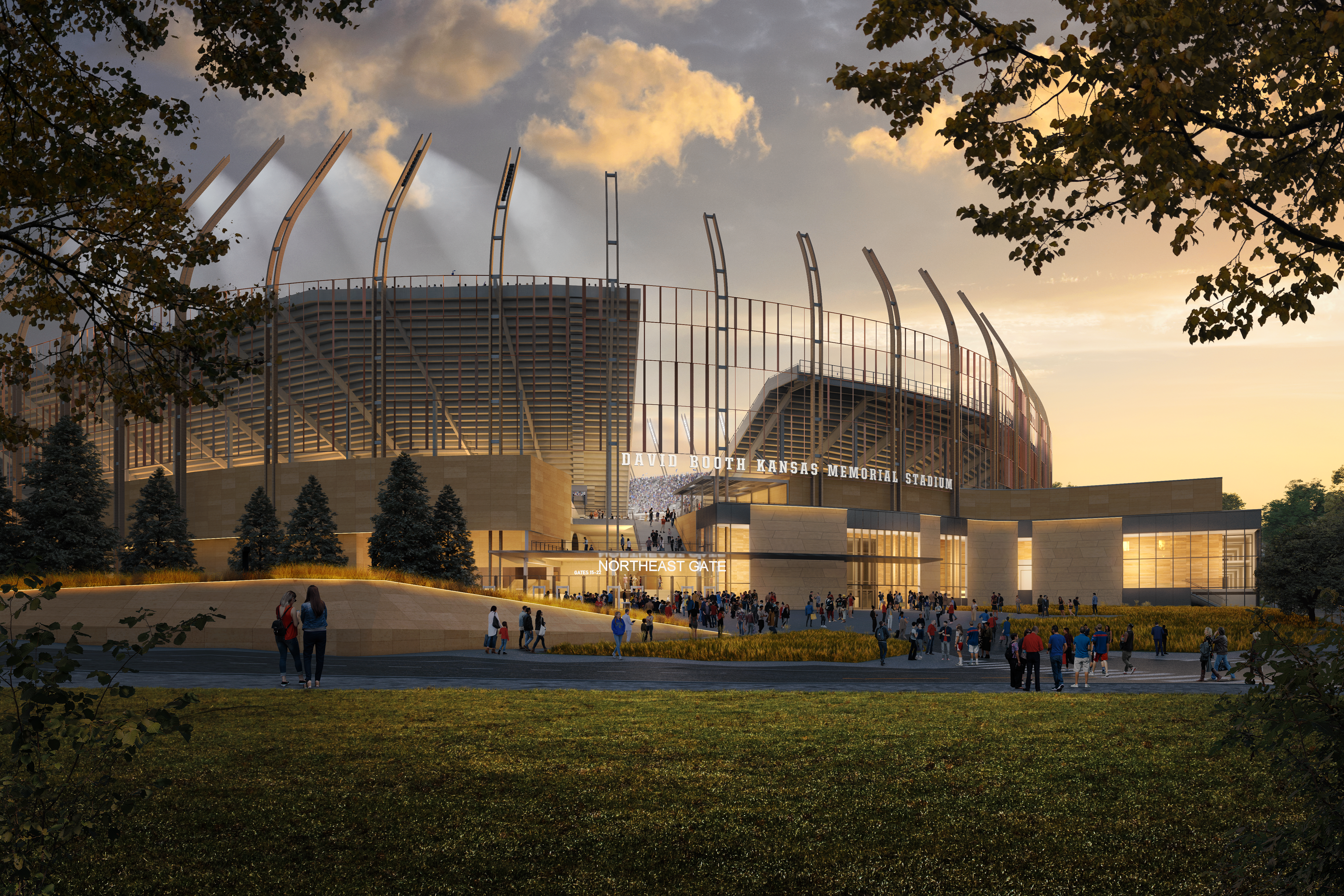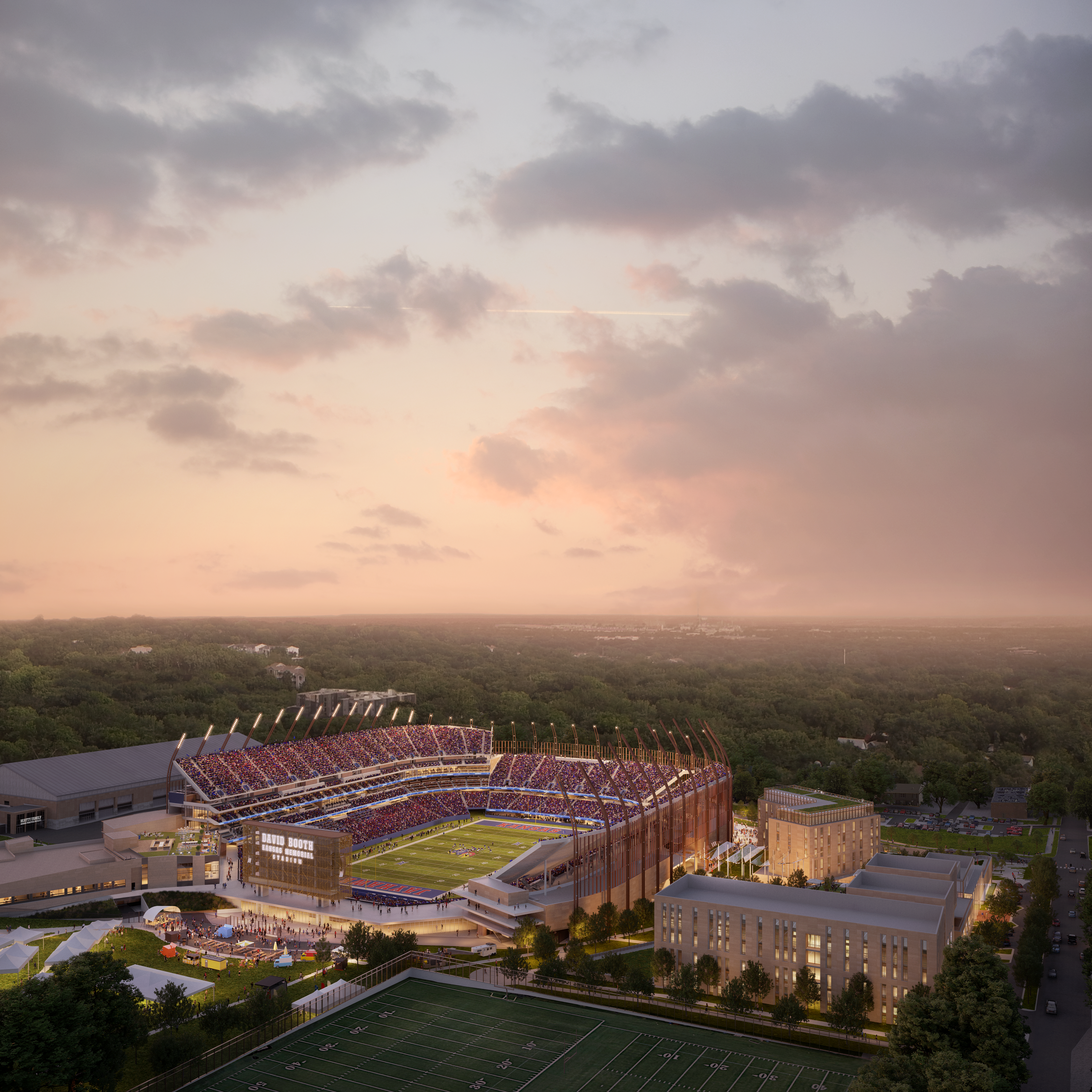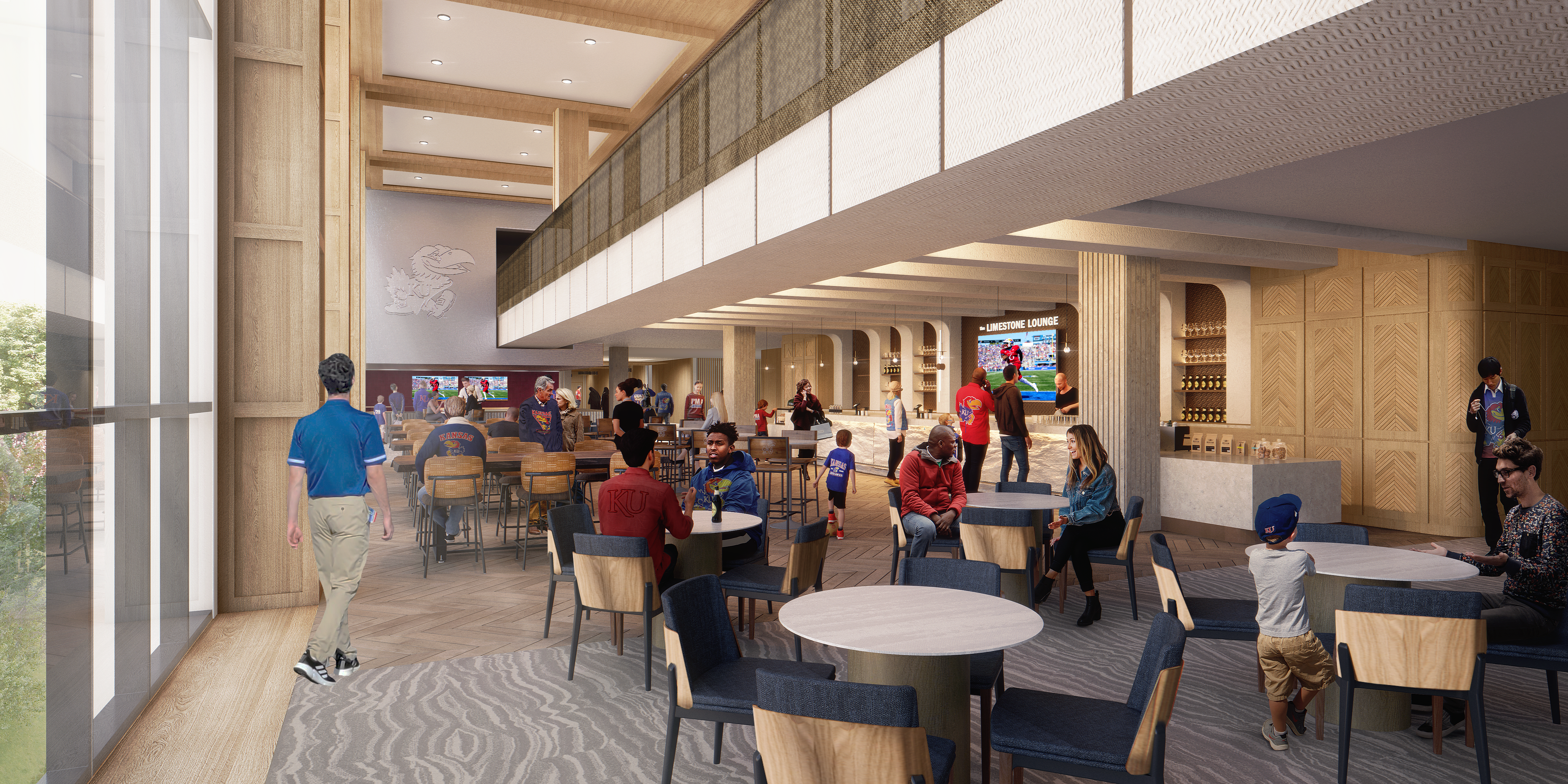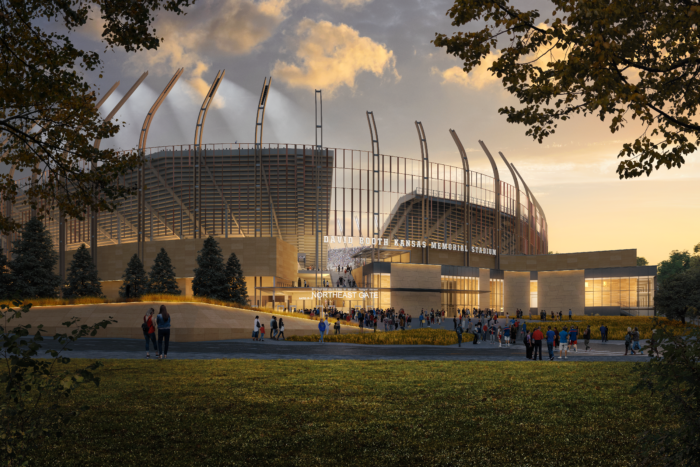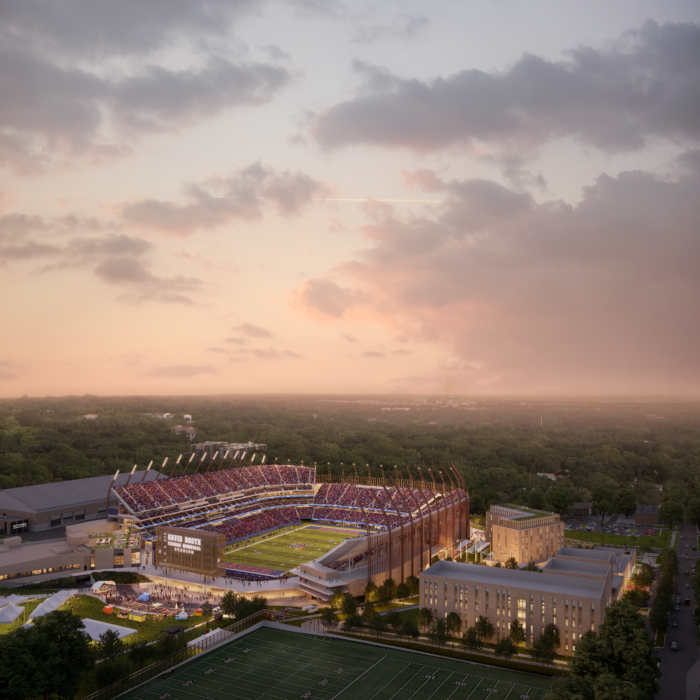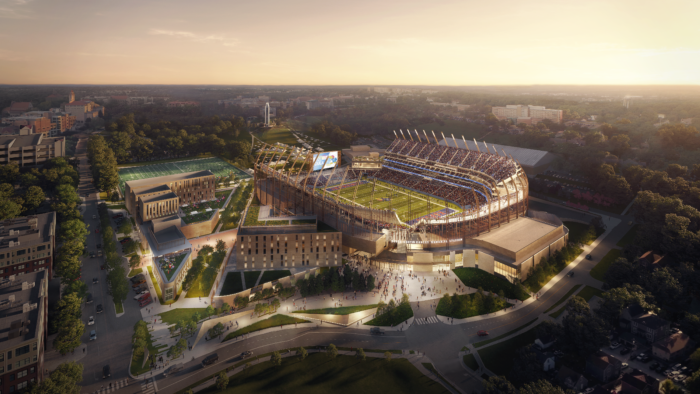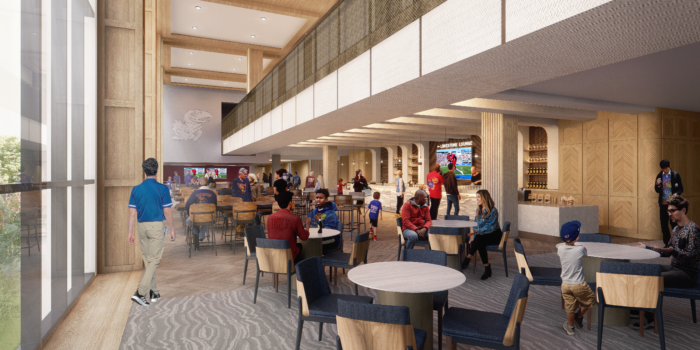Lawrence, Kansas –The University of Kansas has taken a significant step forward in its quest to revitalize its iconic Gateway District in the heart of Lawrence, Kansas. This visionary project not only encompasses a substantial overhaul of the David Booth Kansas Memorial Stadium but also involves a comprehensive renovation of the Anderson Family Football Complex. Spearheaded by the collaboration between renowned architecture firms HNTB and Multistudio, the Gateway Project aims to usher in a new era of economic and cultural prominence for the University.
The Gateway District, a focal point of the University’s strategic plans, is set to receive a comprehensive makeover that promises to redefine the vibrant area’s aesthetic and functional aspects. John Wilkins, principal at Multistudio, expressed his pride in the longstanding partnership between his firm and KU, highlighting their involvement in various transformative projects, including the ongoing renovation of Allen Fieldhouse and KU Innovation Park. Wilkins states, “The Gateway District’s Project holds a crucial role in the broader university masterplan, positioning KU as a vital hub for economic and cultural influence within Kansas and on a larger scale.”
Ambitious Transformation Plan for Gateway District
The project’s core focus remains transforming the David Booth Kansas Memorial Stadium and the surrounding area. This endeavor aligns with the University’s commitment to creating an enriched experience for students and visitors. Gerardo Prado, Vice President and National Sports Practice Leader at HNTB emphasized the potential of projects like the Gateway District to stimulate economic development, catalyze campus transformations, and enhance overall visitor experiences. Prado underlined the significance of these endeavors in driving continuous growth for the University, the city of Lawrence, and the state of Kansas.
Scheduled for completion in 2025, the rejuvenated stadium is poised to symbolize KU’s dedication to excellence. The stadium upgrades encompass several essential aspects, including an improved seating bowl design to enhance sightlines, expanded concession and restroom facilities, and accessible seating options. Notably, the redesign prioritizes fan comfort and engagement, incorporating premium amenities such as club seats, ledge seats, and suites. Integrating multi-use spaces further bolsters the stadium’s role as a hub for conferences and community gatherings.
One of the standout features of the redesigned stadium is its seamless indoor-outdoor connection, mirroring the region’s values and fostering a sense of unity. This integration enhances the authenticity of the fan experience, promising an atmosphere that resonates with generations to come. With its visionary approach, the Gateway District is set to transform the very essence of the university campus.
Furthermore, the Anderson Family Football Complex undergoes a two-phase revitalization process. While phase one, recently revealed, introduced a new locker room and weight room, phase two holds even grander ambitions. The forthcoming phase features an expanded entry lobby, augmented auditorium, and upgraded coaches’ offices and team meeting rooms. Notably, cutting-edge sports medicine, science, and recovery facilities will provide KU student-athletes with optimal preparation and healing resources. One of the club lounges adjacent to the complex will even serve as a specialized training area for student-athletes.
Travis Goff, KU’s Director of Athletics, hailed the Gateway Project as a watershed moment, poised to reshape the landscape of Kansas Football and beyond. Goff emphasized that this initiative would radiate positive effects throughout the University and regional economy beyond the immediate benefits to the football program. The project’s overarching impact promises to extend well beyond the confines of the football field, solidifying KU’s commitment to holistic growth and excellence.
As the Gateway Project continues to unfold, the anticipation grows. While the David Booth Kansas Memorial Stadium redesign takes center stage, the broader revitalization of the Gateway District signifies a bold leap forward for the University of Kansas. With the combined expertise of HNTB and Multistudio, this visionary endeavor is set to etch a new chapter in the history of KU, resonating far beyond the state lines and echoing as an emblem of progress and transformation. Stay tuned for more announcements in the coming months as the Gateway District’s vibrant future unfolds.
